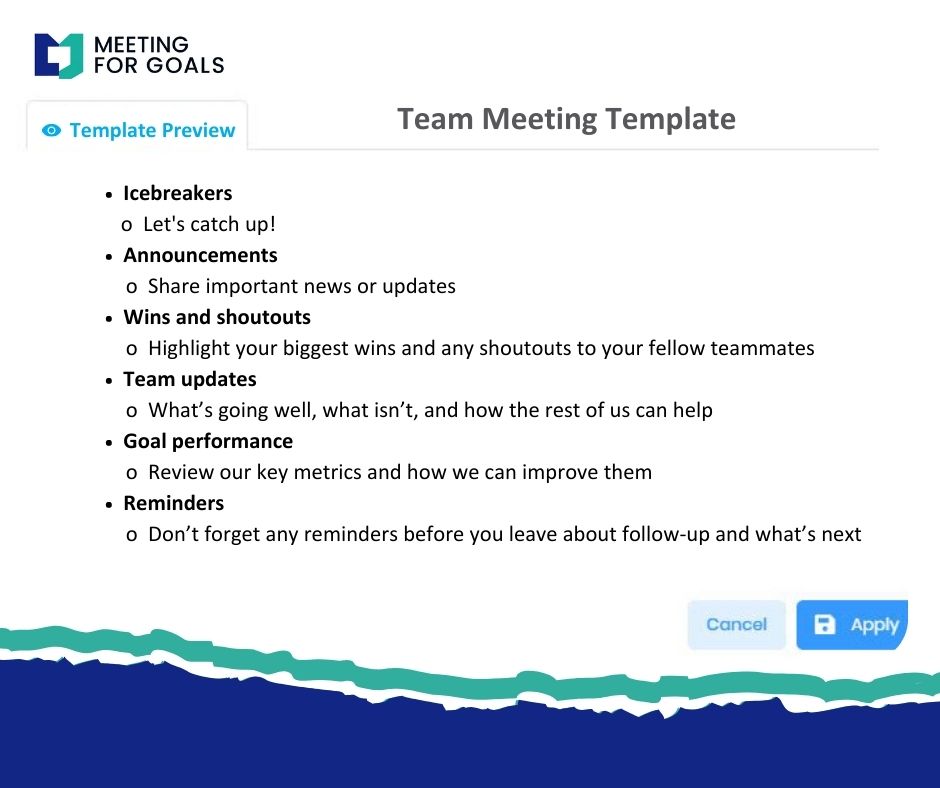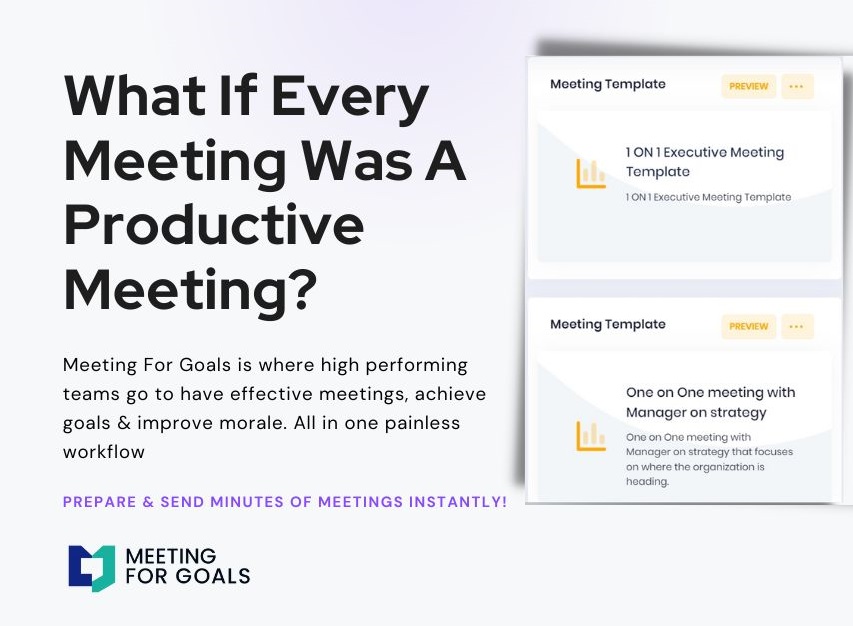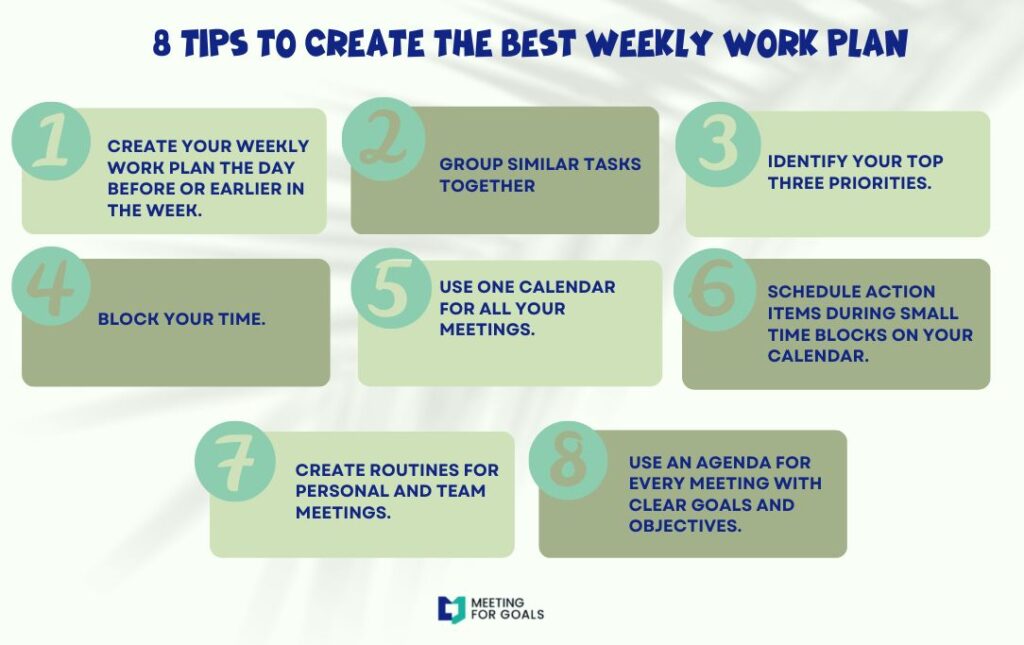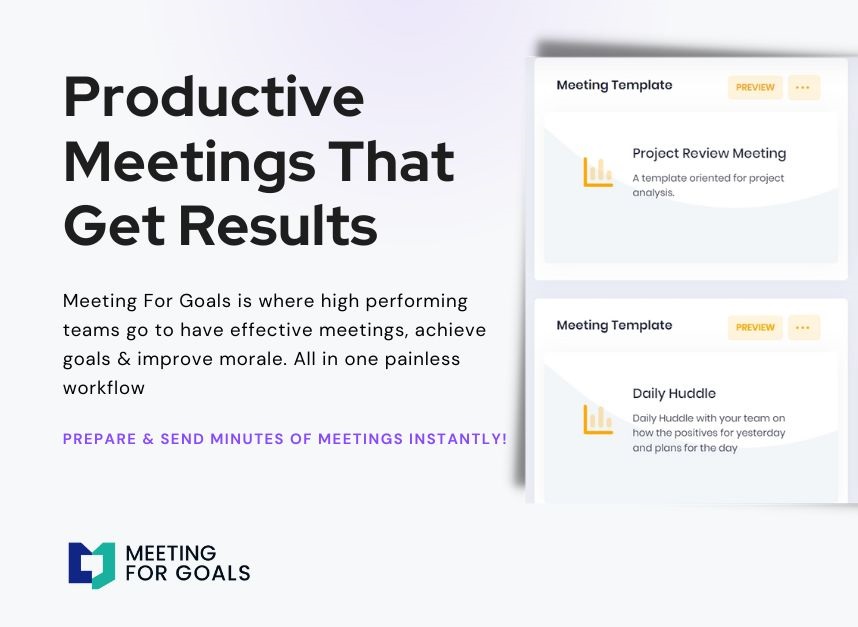Developmental Goals Examples: How to Drive Team Productivity & Performance Through Smarter Meetings
In today’s fast-paced business world, success isn’t just about hitting numbers. It’s about **continuous growth**. Whether you’re a VP, Director, or C-suite executive, you know that **high-performing teams** don’t just deliver results—they evolve. That’s where **developmental goals** come in. These goals help individuals and teams grow their skills, sharpen collaboration, and align with company objectives.
If you’re managing a team of 40–70 employees, setting clear **developmental goals** can transform your meetings from time-wasters into strategic growth sessions. And with tools like **Meeting For Goals**, you can make that transformation seamless.
👉 Ready to get started? Sign up today at https://app.meetingforgoals.com/TenantRegistration/Register and elevate your meetings.
I. Introduction
In a world driven by KPIs and quarterly results, the importance of long-term development often gets lost. But here’s the truth: without growth, performance eventually plateaus.
Developmental goals are the antidote. They help individuals become better leaders, communicators, and collaborators. When applied at the team level, they foster alignment, innovation, and a culture of continuous improvement.
This guide will show you:
- Real-world examples of developmental goals for individuals and teams.
- How to integrate these goals into your meetings using **Meeting For Goals**.
- Tips to make your meetings more engaging, productive, and aligned with company strategy.
Whether you’re leading a sales team, managing operations, or steering company-wide initiatives, these insights will help you unlock your team’s full potential.
2 Minute Video
Watch a 2 minute demo of our meeting management software in action
II. Understanding Developmental Goals
A. What Are Developmental Goals?
Developmental goals are objectives that focus on improving skills, behaviors, and knowledge. They’re not about hitting a sales target or launching a product. Instead, they’re about the journey—growing into a more capable, confident, and aligned version of yourself or your team.
These goals fall into three main categories:
- Personal Development Goals: Building emotional intelligence, resilience, or self-awareness.
- Professional Development Goals: Gaining new skills, certifications, or leadership capabilities.
- Team Development Goals: Improving collaboration, communication, and shared accountability.
Unlike performance goals, which are usually short-term and results-focused, **developmental goals** are about long-term growth. They’re foundational to building a resilient and adaptable workforce.
B. Why Developmental Goals Matter in Business
Here’s why they’re worth your attention:
- They Boost Individual Confidence and Capability: When employees know they’re growing, they’re more engaged. According to Gallup, employees who have development opportunities are twice as likely to stay with their company.
- They Improve Team Collaboration: Teams that grow together, win together. Having shared developmental goals—like improving cross-functional communication—helps teams operate more smoothly.
- They Align Everyone with Company Strategy: Developmental goals ensure that everyone’s growth contributes to the broader mission. Meeting For Goals helps link these goals to real-time meeting agendas and action plans, so nothing falls through the cracks.
Need help structuring your meetings around goals? Check out our free templates: https://meetingforgoals.com/meeting_templates
Adding an Agenda
How to add an agenda instantly on Meeting For Goals
III. Examples of Developmental Goals for Individuals
Let’s look at some practical, easy-to-implement goals for individual growth.
A. Skill Enhancement Objectives
- Learn a New Tool or Software: Technology evolves fast. Encourage your team to stay ahead by mastering tools that improve their workflow.
Example: “Complete a Notion productivity course in 30 days and use it to manage weekly project updates.” - Improve Presentation and Public Speaking: Strong communication is key—whether you’re pitching ideas or leading a team meeting.
Example: “Present team results at the next monthly review and request feedback from peers.” - Strengthen Writing Skills: Clear writing leads to clear thinking. This is especially important for client-facing roles or internal documentation.
Example: “Take a business writing course and apply techniques in all client emails over the next quarter.”
B. Time Management and Productivity Objectives
- Reduce Meeting Time with Clear Agendas: Meetings without focus waste time. Empower your team to run tighter, more effective sessions.
Example: “Implement 3-point agendas in all team meetings to reduce average meeting time by 25%.” - Prioritize Tasks More Effectively: Time is a limited resource. Learning to prioritize can significantly improve output.
Example: “Use the Eisenhower Matrix weekly to identify top priorities and reduce missed deadlines by 20% over the next two months.” - Eliminate Multitasking: Multitasking reduces productivity by up to 40%, according to the American Psychological Association. Help your team focus better.
Example: “Adopt a single-tasking approach during deep work hours and track weekly task completion rates.”
IV. Examples of Developmental Goals for Teams
Team goals amplify individual growth and create a culture of shared accountability.
A. Enhancing Team Collaboration
- Create a Communication Charter: Miscommunication is a silent productivity killer. A team charter sets expectations and reduces friction.
Example: “Collaboratively build a team communication charter by end of the month and review quarterly.” - Establish Regular Feedback Loops: Feedback shouldn’t be limited to annual reviews. Make it part of your culture.
Example: “Host monthly peer feedback sessions to improve team transparency and trust.” - Foster Psychological Safety: Teams perform better when members feel safe to speak up. Google’s Project Aristotle found this to be the most important factor in team success.
Example: “Introduce a ‘voice of the week’ rotation where each team member shares one improvement idea during team meetings.”
B. Aligning Team Goals with Company Objectives
- Link Team Initiatives to Strategic Goals: When teams understand how their work contributes to the big picture, motivation soars.
Example: “Use Meeting For Goals to tie every Q2 project to one of the company’s top 5 strategic priorities.” - Measure Progress with SMART Goals: Vague goals go nowhere. Make your team’s goals clear and trackable.
Example: “Improve customer onboarding satisfaction score by 15% by end of Q3 through process updates and weekly tracking.” - Hold Monthly Strategy Syncs: Keep everyone aligned with regular check-ins.
Example: “Host a 30-minute monthly strategy alignment meeting using Meeting For Goals to review progress and adjust priorities.”
Looking to improve your team’s collaboration? Learn more at https://meetingforgoals.com
V. Implementing Developmental Goals in Meetings
A. Structuring Meetings Around Goals
- Use Goal-Focused Agendas: Start every meeting with a purpose. Include a section for reviewing developmental goals.
Example: “Add a 10-minute goal review segment to weekly team meetings using Meeting For Goals.” - Assign Ownership: Goals without owners don’t get done. During meetings, assign responsibility and set deadlines.
Example: “Assign a team member to lead a new onboarding checklist rollout and report progress bi-weekly.” - Celebrate Wins and Learn from Misses: Use meetings to recognize progress and troubleshoot roadblocks.
Example: “At the start of each month, highlight one team win and one area for improvement.”
B. Using Meeting For Goals to Track and Align
Meeting For Goals is designed to make goal-driven meetings simple and effective.
- Link Meetings to Company Strategy: Every meeting can be aligned with a strategic goal—ensuring that discussions stay relevant.
- Real-Time Goal Tracking: Track progress during meetings, assign follow-ups, and adjust timelines—all in one place.
- Built-in Accountability: Assign tasks, set deadlines, and monitor progress without switching tools.
- Templates for Every Meeting Type: From 1-on-1s to strategy sessions, our templates make it easy to stay focused. Explore them here: https://meetingforgoals.com/meeting_templates
By integrating developmental goals into your meeting rhythm, you create a culture where growth isn’t just encouraged—it’s expected.
VI. Additional Tips for Success
A. Start Small
You don’t have to overhaul all your meetings at once. Start with one team or one recurring meeting.
B. Involve Your Team
Let team members contribute to setting developmental goals. This boosts buy-in and commitment.
C. Review and Refine Regularly
Developmental goals aren’t set-and-forget. Revisit them monthly to ensure they’re still relevant.
D. Use External Resources
Not sure where to start with development planning? Resources like **Harvard Business Review**’s guide to goal-setting can help you craft meaningful objectives.
E. Measure Impact
Use feedback, performance metrics, and engagement surveys to track the impact of your developmental goals.
F. Encourage Peer Learning
Create opportunities for team members to share what they’ve learned. Peer-led sessions or “lunch and learns” can boost team knowledge and morale.
VII. Conclusion
Developmental goals are more than just checkboxes—they’re the foundation of a thriving, high-performing team. When individuals grow, teams improve. When teams align with strategy, companies succeed.
By embedding developmental goals into your meeting culture, you create a workplace where progress is visible, accountable, and celebrated. And with tools like **Meeting For Goals**, you can make this process seamless.
From tracking progress to aligning with company strategy, **Meeting For Goals** turns your meetings into engines of growth.
Ready to take your team’s development to the next level?
- 👉 Sign up now at https://app.meetingforgoals.com/TenantRegistration/Register
- 👉 Explore our free meeting templates to get started: https://meetingforgoals.com/meeting_templates
- 👉 Learn more about how we help teams thrive: https://meetingforgoals.com
External Resources:
- Gallup Research on Employee Development
- Harvard Business Review: How to Set Goals That Will Keep You Focused and Motivated
With the right goals and the right tools, your meetings can become the most powerful driver of team performance and productivity.




